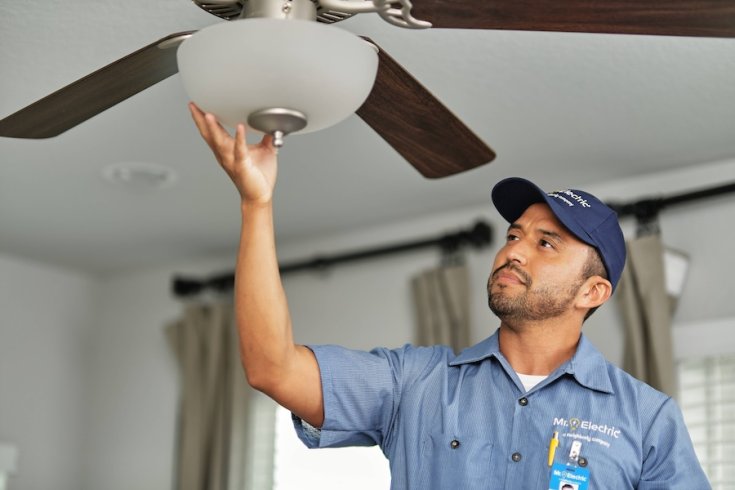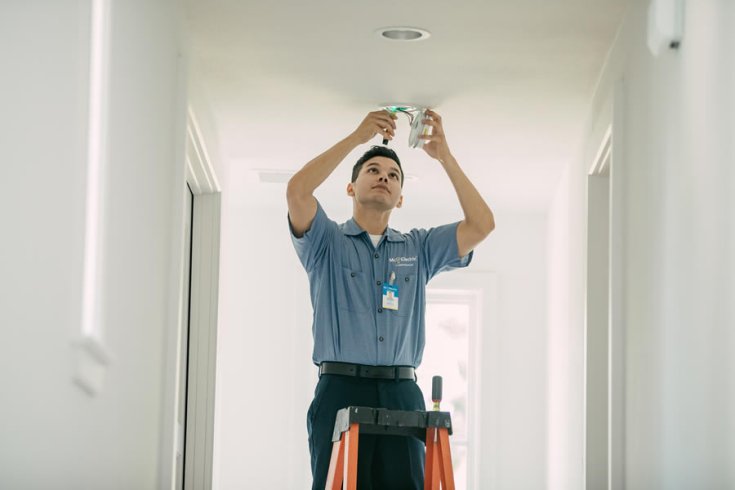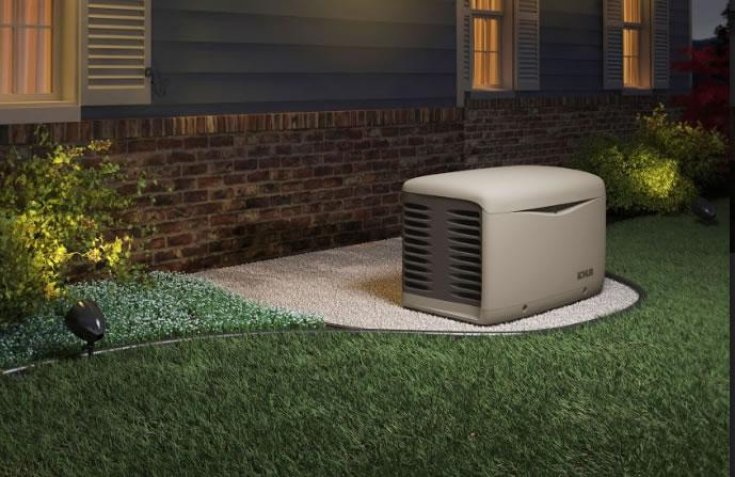There’s nothing convenient about an overloaded outlet or a power strip that’s seen better days. Most of us rely on extension cords when we run out of wall space for plugs, but it can turn into a serious hazard. Mr. Electric is here to help you avoid danger. We see a lot of preventable issues that could have been avoided with a little more awareness about how extension cords really work. Misuse is common, and the signs of trouble aren't always obvious. Read more to find out how to use extension cords safely, why some homes are more prone to issues, and how an electrical safety inspection or updated electrical wiring can protect your space.
Don’t Treat Extension Cords Like Permanent Wiring
Extension cords are made for temporary use. Even heavy-duty outdoor-rated cords aren’t designed to become a permanent part of your setup. The outer insulation isn’t strong enough to withstand constant foot traffic or environmental exposure forever. At some point, the internal conductors might wear down, especially if they’re bent or compressed repeatedly. When that happens, you’re looking at a serious risk of short circuits or electrical fires. It’s also important to match the cord to the job. Most people assume any extension cord will work, but using the wrong gauge or length can cause overheating. The longer the cord, the more resistance it creates, and the more likely it is to overheat, especially when powering large appliances or tools. Light-duty cords should never be used with heaters, microwaves, or anything that draws a lot of power. If you’re not sure whether a cord is safe for a certain use, ask an electrician. It’s better to check than to risk a fire. When you find yourself relying on extension cords constantly, it’s time to rethink the setup. You might need more outlets, a new circuit, or an electrical repair to bring an existing circuit back up to code.
Watch for These Common Warning Signs
High-quality cords can still go bad. If an extension cord feels warm when it’s in use, that’s a signal something’s wrong. Heat usually means the cord is carrying more current than it can handle or it’s damaged internally. Both scenarios are dangerous. Other signs to watch for include:
- Cracked or Frayed Insulation: These gaps expose the inner wires and increase your risk of shocks or fire.
- Loose Prongs or Plugs: A loose connection can cause arcing, which creates heat and sparks.
- Buzzing, Crackling, or Humming sounds: These are symptoms of electrical arcing or internal damage.
- Discoloration Around the Plug: If you see burn marks or melted plastic, unplug the cord and stop using it.
Using damaged cords, even once, can put your safety at risk. Stacking multiple cords or daisy-chaining is one of the most hazardous practices around. It leads to overloading the circuit, which defeats the entire point of using the cord in the first place. If you’ve noticed any of these signs, a safety inspection can catch these issues and identify other areas of risk.
Childproof and Pet-Proof Your Cords
Extension cords are easy for children and pets to reach, and unfortunately, they’re just as easy to chew, pull, or trip over. If you live in a home with little ones or animals, you need to take extra precautions. Start by choosing shorter cords when possible. A long, coiled-up extension cord might be an attractive hazard. Keep cords tucked away out of sight and out of reach. Use cord management covers or raceways to secure cords along walls, and never run them under rugs. Outlet covers should be used whenever an extension cord is plugged into a wall. Children are curious, and uncovered plugs can quickly turn into a safety threat. Pets are even more unpredictable. One bite from a teething puppy can expose live wires. If you’re dealing with cords near cages, kennels, or play areas, look for pet-proof cord covers made from chew-resistant materials. It might also be worth evaluating how many cords you're using in these rooms. Electricians in Castle Rock can tell you whether you're pushing the limits of your existing outlets. If so, adding more outlets through electrical repair might be a safer fix.
Plan for Long-Term Electrical Safety
Extension cords are a stopgap. If you’ve got a growing family, a home office, a kitchen with multiple appliances, or a garage setup that includes power tools, your electrical system needs to grow with you. And most older homes aren’t designed to meet the load demands of today’s devices. If you’re using cords every day or relying on them in high-traffic areas, it’s time to schedule an electrical safety inspection. You may want to take the opportunity to future-proof your space by upgrading outlets, circuits, or your main panel to make it easier to live in without relying on workarounds. A few small upgrades can eliminate your dependence on cords and reduce the risk of overload for good.
Do You Need an Electrical Wiring Upgrade?
Extension cords are useful tools, but they’re not a substitute for the right electrical setup. Heat, buzzing, frayed insulation, and frequent tripping of breakers are all clues that something isn’t right. Rather than buying another cord, call a professional who can diagnose the real problem. Mr. Electric will get to the source of your home’s electrical risks. Whether you need outlet upgrades, new circuits, or a routine electrical safety inspection, we’re here to help. Call us today to schedule your inspection or upgrade with electricians in your neighborhood.








